We spoke about his history, why this story is an important one to tell, and what the filmmaking process has been like so far. Perez has set up a crowdfunding effort through Seed & Spark to help finalize the film.
RUD: Tell us a little bit about yourself. And what this film is about.
Perez: I was–although in my heart still am–a longtime Las Vegas resident. I lived there 25 years. I went to high school at Bonanza and I attended UNLV. I got really involved in the poetry and art and music scene in Vegas at a relatively young age. When I was a teenager, I started doing poetry and live music and stuff like that down on Maryland Parkway. That’s where the scene was. It was kind of weird because I was a high school kid and it was by the college, but all the cool kids in high school hung out on the east side of town by the university because that’s where the coffee shops were. You were too young to go drink at bars, but you know, not too young to go hang out and drink coffee all night. These places would be open till two, three o’clock in the morning. That was the place to hang out on the weekends and that’s basically how I got exposed to everything that I previously didn’t know about: video shows and poetry readings and underground raves and open mics and zine culture. My entire world opened up.
Pretty much everything in my life kind of sprung out of that. I started publishing zines when I was 18 or 19–this was pre-internet. If it had been five or ten years later, I probably would have started blogs. I got the attention of some Editors at local weeklies and I started freelancing for them and went to school for journalism. I got into several editorial jobs, started working in digital content, and I kept playing music. So I kind of turned a career out of never growing up, for better or worse.
I started dabbling in filmmaking about maybe seven or eight years ago. I did a couple short films and a bunch of video journalism. I’ve been working on this documentary for like 10 years without even realizing it. The documentary is about the scene that was happening around UNLV in the early 90s and how it developed and why it sort of went away. If you were to go down to Maryland Parkway by the university today, you would see a very different kind of scene.
RUD: It’s a pretty different picture there now.
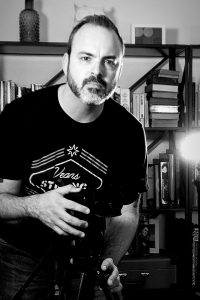
Perez: I think for Vegas it was probably the last time that there was really a centralized place for all of those things. You know, the record stores and music clubs and coffee shops and galleries and everything that was all happening in a very concentrated area. And the interesting thing is it was such a tightly knit community. Everyone who was part of that, no matter if they were a gutter punk or the owner of a coffee shop or a DJ or a singer in a band is kind of still part of that extended family.
So Parkway of Broken Dreams really is about this scene that I think a lot of people outside of that community don’t necessarily know a lot about. There’s really no physical manifestations of it left. It’s not like the Sunset Strip scene that died out after the 80s, but you can still go down there and all these places are still there. You go down around Maryland Parkway now and all that’s gone. I mean literally either the buildings have been torn down or they’re completely vacated or it’s a Chipotle or whatever. So this is really telling that story before it’s lost.
RUD: So the movie came out of an article you wrote in 2006. It’s an oral history. It was a little surprising to be reading an oral history that’s over 10 years old. They’re really popular right now, but I don’t know how popular they were back then. Why did you decide to write that article in that way?
Perez: As a writer it was the only way to tell it best. Just let the voices tell the story. I think I interviewed like a dozen or 15 people for that and to try to just get their quotes in a kind of traditional style article, I don’t think would have worked it. It was really best to just provide the goalposts and let the people who made it happen speak for themselves, and I think it turned out much better than if I had tried to overwrite it.
RUD: How did you decide who to talk to and was there anyone you wanted to feature but couldn’t?
Perez: It was a combination of who did I have access to and who did I feel like was pivotal. There was the Newsroom, the coffee shop that eventually became Cafe Espresso Roma, which was kind of a central fixture in the scene. So I knew that I wanted to talk to the guy who opened The Newsroom. That was Len Dorris who also went on to co-own Enigma Cafe downtown. So I was like, naturally I’m going to talk to him. KUNV was a big part of this. Who do I know that was influential at KUNV? And it just so happened that my best friend was the music director there. So it was kind of just going, “OK, who was prominent in the sort of different facets of that?”
There’s one guy I couldn’t get for that article and I have not been able to get so far for the film either. And that is someone named Michael Gazal. He was the owner of Cafe Copioh. Cafe Copioh was probably the most emblematic of that scene because it was this European-style coffee house full of thrift store furniture and people just hung out and smoked and drank Ethiopian coffee. I couldn’t get him for the original article. This was also before social media and stuff. But the advent of social media hasn’t helped because he doesn’t use it. He does have a Facebook profile that I don’t think that he ever checks. I sent a friend request years ago and never got accepted. I’ve literally stopped by his family’s restaurant in LA looking for him. If I ask them for contact information, they don’t have it. So this is like my great white whale.
RUD: So you have some of the people from the original article who will be appearing in the film?
Perez: Yeah, I started with, “who did I talk to in the article?” Because in a perfect world, you know, I would have just gone back in time and shot all those interviews on film. You really can’t film an interview over the phone. I have a very specific look for this film. All the archival footage is going to look bad, but all the new features are going to look good and I want to keep that up. So the challenge, of course, is going to where these people are or trying to grab them while they’re around. The challenge for me is besides the fact that they’re scattered around the country, I’m not in Vegas full-time anymore. So even the people in Vegas, I have to travel to capture that stuff.
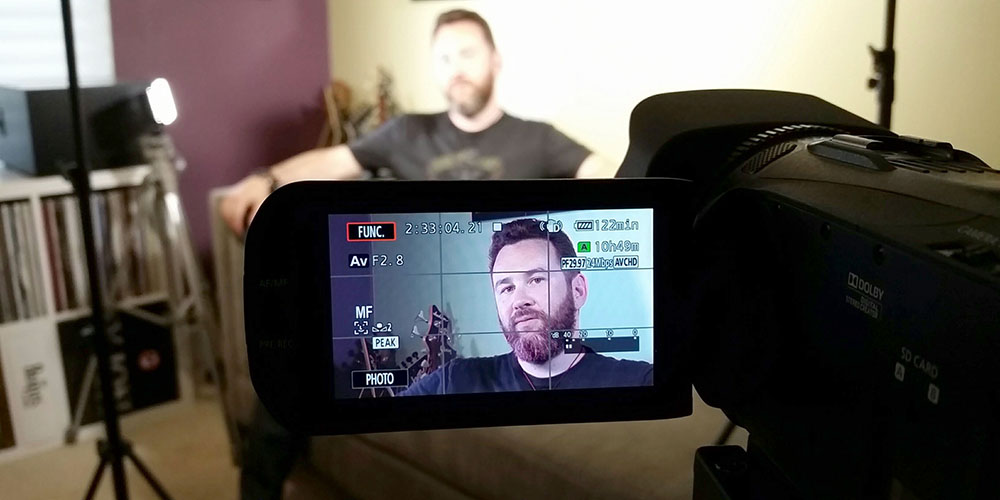
RUD: What’s been the process like so far in trying to get this film made? And where are you at right now?
Perez: I think I’ve been trying to make this almost since I published that original article. I found footage that I started shooting with real primitive digital cameras 11 years ago and I was actually looking at some old blog posts and apparently I’ve been talking about working on this documentary for years. It’s just a subject that never went away. And I think that when some of the people from that scene started to die either from natural causes or self-inflicted causes or whatever, I was like, “I really need to start getting these people on film.”
I have the advantage of the original article, which is a really great outline. And really, documentary filmmaking doesn’t require a lot of production. It can. But for something like this, it’s really just me and the camera and some lights and a microphone sitting down with people and just having them talk about their experiences and recollections of the time.
The challenge is getting all the puzzle pieces to fit. I’m learning things, but I also already know a lot about it because I was there. For the most part, this is reconnecting with people that I haven’t seen in 20 years, which is a cool side effect. Or it’s getting to know people who I never knew. One of the people I interviewed is a writer named Mike Upchurch. He used to work on The Chris Rock Show. He does stand-up comedy. He lives in LA and he’s someone I’d never connected with back in the day even though we had a ton of mutual friends. I went to his apartment and hung out with him and he showed me what he was working on and we talked for a while and traded stories.
There’s some part of the process that happens off camera, obviously, and just trying to capture a conversation so that it feels natural and relaxed and the people are in their comfort zone. The other part of it, of course, is getting the archival footage. That’s a little more challenging because obviously I can’t on-demand say, “Hey, I want an exterior of Cafe Espresso Roma at night.” It doesn’t exist. If someone’s talking about the bar they hung out at and I don’t have footage of that bar, you’re left with nothing on screen. I mean nothing but your love for the talking head, and that’s a challenge. Thankfully there is a lot of footage from people recording shows and poetry readings and general mischief.
And I have the benefit of people being very generous with that footage. No one has turned me down yet. No one’s been like, “Oh, I’m going to need $1,500 for that.” Which is cool because up until this point I’ve paid for everything. All the equipment, all the travel, buying people’s lunches and coffees and you know, all that kind of stuff.
RUD: That leads into my next question. You’ve launched a crowdfunding campaign, I guess to finish out the film. Can you tell us the details about that?
Perez: As I said, I’ve paid for everything out of pocket so far and I came to a point where I’m like, “OK, I can keep doing that but only to a certain point, you know.” There’s people I want to interview in New Jersey and Michigan and Oregon and obviously you start adding together expenses for those trips and it really adds up. And then there’s legal fees. There’s all the unsexy stuff about filmmaking that has to be paid for.
But I knew that there’s such a strong community around this scene that’s being portrayed in the film. So as much as I don’t like to ask for any assistance, I was like, “Let’s make this a community effort.” I’m the administrator of a Facebook group about the Las Vegas alternative scene in the 90s and someone had shared a link to this documentary called Desolation Center. This was literally as I had just started filming on Parkway of Broken Dreams. It’s the untold story of Reagan-era guerrilla punk industrial desert happenings in Southern California. Basically these guys put on a series of shows in the middle of the desert with all these late 80s punk and industrial bands–stuff like Sonic Youth. I’d never heard of it before until I saw this film project. I watched the trailer and I was like, “That trailer is exactly like the kind of style of what I’m going for.” And it happened to be a fundraising project on this website called Seed & Spark.
Unlike Kickstarter or GoFundMe or Indiegogo, Seed & Spark is specifically designed for filmmakers. This website does a thing called rallies. They have different themed rallies and if you become a finalist in the rally–which you have to meet certain financial goals, you have to meet follower goals–you get a chance to receive additional funding from sponsors. The one that I’m participating in is called Hometown Heroes, which is for films that take place in or have a connection to your hometown. So not only are we raising funds for the film, but also will hopefully get to be a finalist for this Hometown Heroes rally, which is presented by the Duplass brothers, who have a production company. And it’s more than just a crowdfunding campaign. It’s kind of the perfect way to build up a dedicated audience for the project and also potentially give us access to those additional production funds and support.
RUD: What do you hope will come from this film or that the film will accomplish? Is it just a nostalgia trip or do you think it will have an impact on the future of the community?
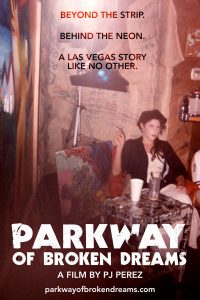
Perez: The reason why I wrote the article originally was because it was right when UNLV was unveiling it’s Midtown Plan. They had this whole big capital campaign and they were trying to raise like four-hundred-and-fifty million dollars or whatever. They had this vision of Maryland Parkway as this vibrant place with cafes and shops and blah blah blah. That was interesting to me because they were trying to force something into existence that organically happened 10 years ago–or 20 years ago now.
Yeah, for some people it is purely a nostalgia trip. I mean, there’s people who have been very excited about this film because they get to relive those stories. And for a lot of people this was a very important and good time in their lives. It was a pivotal time in their lives.
The other thing is to expose the rest of the world to the existence of the scene. A lot of people who were there went on to do really interesting things in the world. A lot of these people owe their careers to the scene that existed there from the late 80s to the early 2000s. The Killers played their first shows at Cafe Espresso Roma, KUNV DJ’s went on to become record label executives. There’s a lot that happened, but that people don’t know about. And something that I realized after the fact–after starting to work on it–everybody knows about the 70s New York punk scene or the 80s LA rock scene or the 90s grunge scene in Seattle, but no one talks about the 90s counterculture scene in Vegas. It was not highly impactful on the world at the time, but looking back 20 years later you realize, “Oh, it’s kind of a key part of a lot of people’s lives.”
RUD: I know you draw comics and write, is there anything else you have going on?
Perez: Part of the reason why it’s taken me years to get to making this is I had to get all the other stuff out of my system. When I was in Vegas, I was always playing in bands and working on comics and just doing whatever. I wrapped up my last graphic novel back in the spring. That book, The Utopian: Foundation, came out in July. So I’m done with that and putting comics on hold for a while. I’m not playing music right now. So really this has been it. I’ve been working on some other filmmaking projects. There’s a TV pilot that I’m working on that’s also kind of Vegas-based. I can’t really talk more about that. Pretty much everything in my world is related to filmmaking right now.
RUD: Anything else you want to add?
Perez: Please go follow the project!
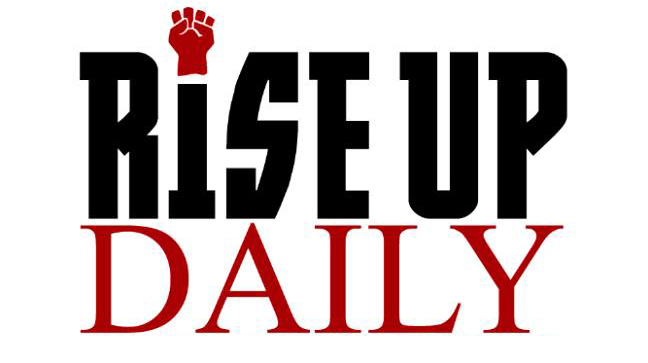

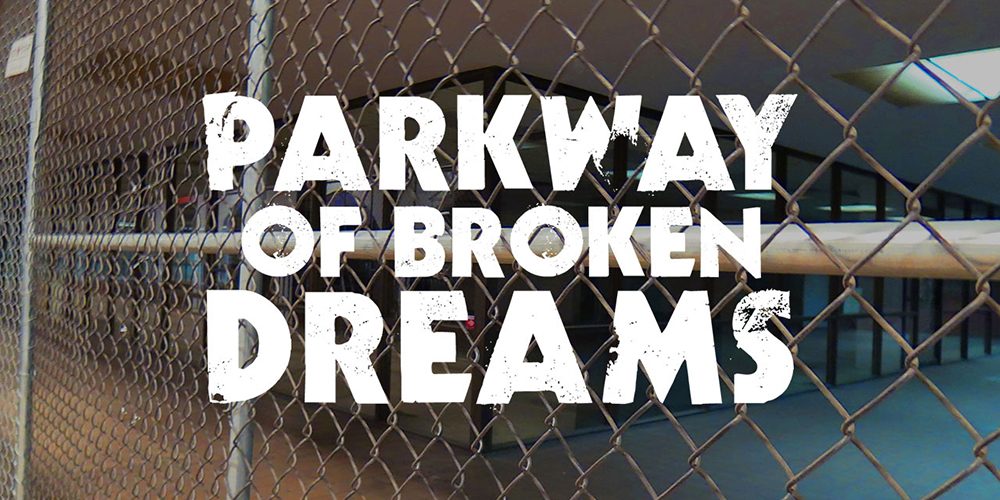
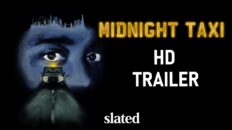

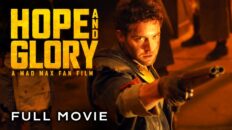
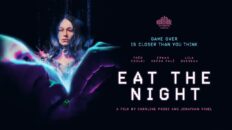
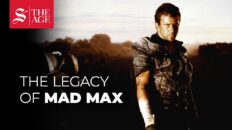

[…] you’re more the reading type, there’s a lengthy new interview with Pj by Darryl A. Armstrong at the rad geek/film/entertainment news website Rise Up Daily. It […]